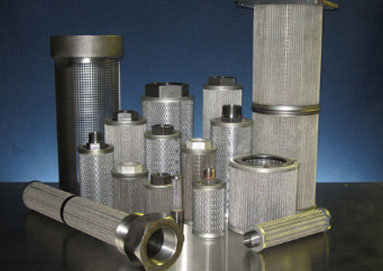Are Suction Filters Still Necessary in Hydraulic Systems?
Leave a Comment

Do Suction Filters and Strainers Cause Cavitation?
Cavitation occurs when vapor bubbles or cavities develop in a liquid, usually if the area is subjected to rapid pressure changes. The phenomenon is mostly observed in areas of relatively low pressure around an impeller. When these bubbles implode or collapse, the force triggers an intense shock wave inside the pump, which can cause significant damage to the impeller or the pump housing.
While hydraulic suction strainers and filters are critical for removing contaminants in hydraulic systems, they can also inadvertently produce cavitation if they’re improperly designed or maintained. Cavitation can occur when the filter becomes clogged with debris, thereby increasing the pressure in the suction line. No matter the cause, cavitation is a serious concern—but operators can avoid problems by using a reliable supplier and regularly cleaning or replacing the suction filter to keep the hydraulic fluid within safe pressure ranges.
Using DOMS Inc.’s filters can help alleviate pressure changes and prevent cavitation. Our filters are available with relief valves, which activate when pressure begins to escalate, thereby protecting the hydraulic system. The relief valve ensures the pump will not sustain damage, even if the filter needs to be cleaned. As a premier manufacturer of hydraulic system components, DOMS also cleans and refurbishes used filters, which helps users adhere to routine maintenance schedules and avoid premature wear.
Why Are Suction Filters Necessary in Hydraulic Systems?
The primary purpose of hydraulic suction filters is to trap and remove impurities from the hydraulic fluid. Hydraulic fluid is easily contaminated, and fluid contamination is especially prevalent right after new equipment is installed. During the initial “breaking in” period, metal flakes from the machinery can work their way into the hydraulic fluid, potentially damaging the pump or impeller and progressing into the tank.
Hydraulic oil creates a lubricating film that’s thick enough to fill the clearance between moving parts in the system. If any particles are larger than the clearance between moving surfaces, they will generate friction, which makes the equipment less effective and weakens delicate system components.
Generally, there are four main types of contamination found in hydraulic fluid:
- “Native” Contamination: Native contamination is caused by contaminants that are introduced into the system or its components during the manufacturing process or repairs. These contaminants include welding slag, excessive sealant, or pieces of Teflon tape.
- Contaminated New Oil: New hydraulic oil is typically not pure enough for advanced, high-pressure hydraulic systems. The storage, handling, and manufacturing processes can expose the oil to contaminants.
- Ingressed Contamination: Ingressed contamination occurs when contaminants become trapped in the air that enters the reservoir through the breather cap. Without a filter, water can contaminate the oil and enter the system, especially in humid operating conditions. Dirt particles can also penetrate the system on dirty cylinder rods; these rod seals aren’t airtight because they need to allow a certain amount of mobility. Additionally, any time the system is opened, such as when an operator disconnects a hose or adds fluid, it’s possible to introduce contaminants.
- Internally Generated Contamination: Internally generated contamination occurs as part of the equipment wear-generation cycle. Particles from the interior surface of components circulate in the system until they are removed with a filtration system.
<Learn about the function of air breather filters in hydraulic systems.>
Turn to DOMS Inc. for Hydraulic Filtration Solutions
Over the past 60 years, DOMS Incorporated has become one of the leading manufacturers of hydraulic filters. We offer a large selection of standard filters, with or without relief valves, and we can custom design hydraulic filters for a range of applications. Our highly skilled team also offers expert advice on safely implementing suction filters and strainers and protecting the integrity of various hydraulic systems. To request a quote or learn more about hydraulic suction strainers and filters, contact us today.



